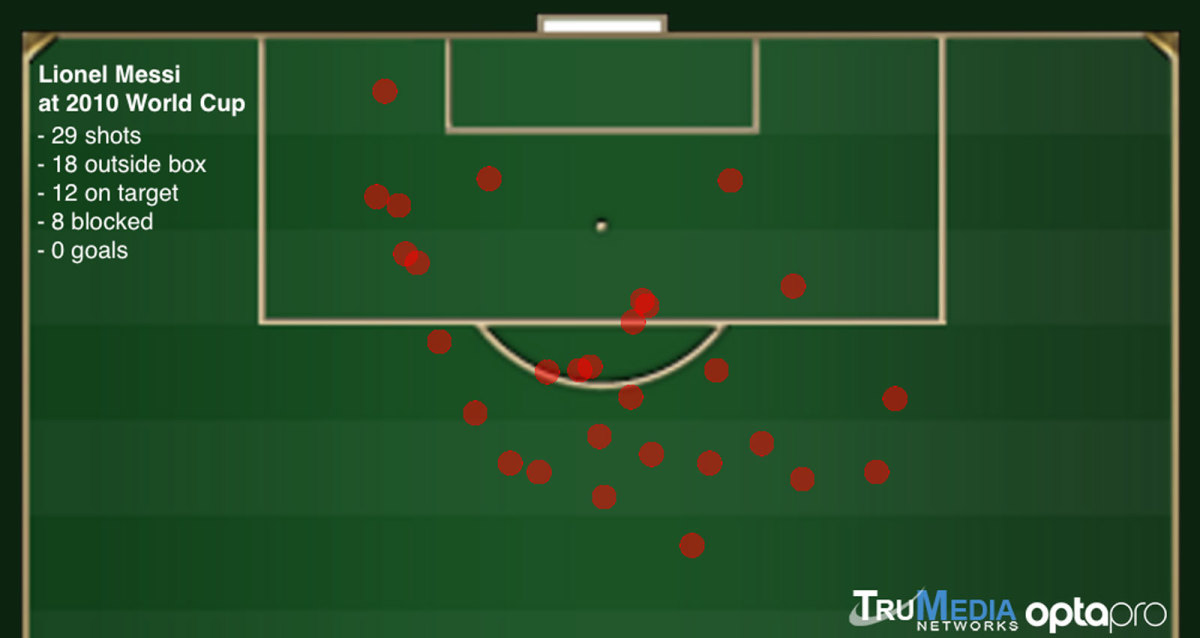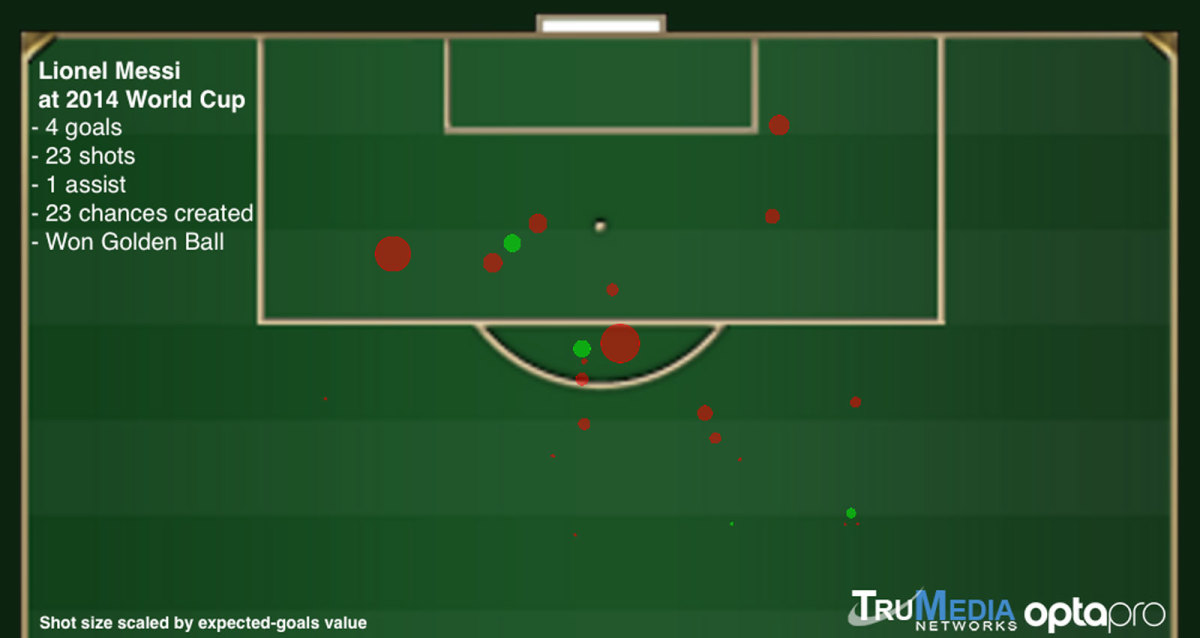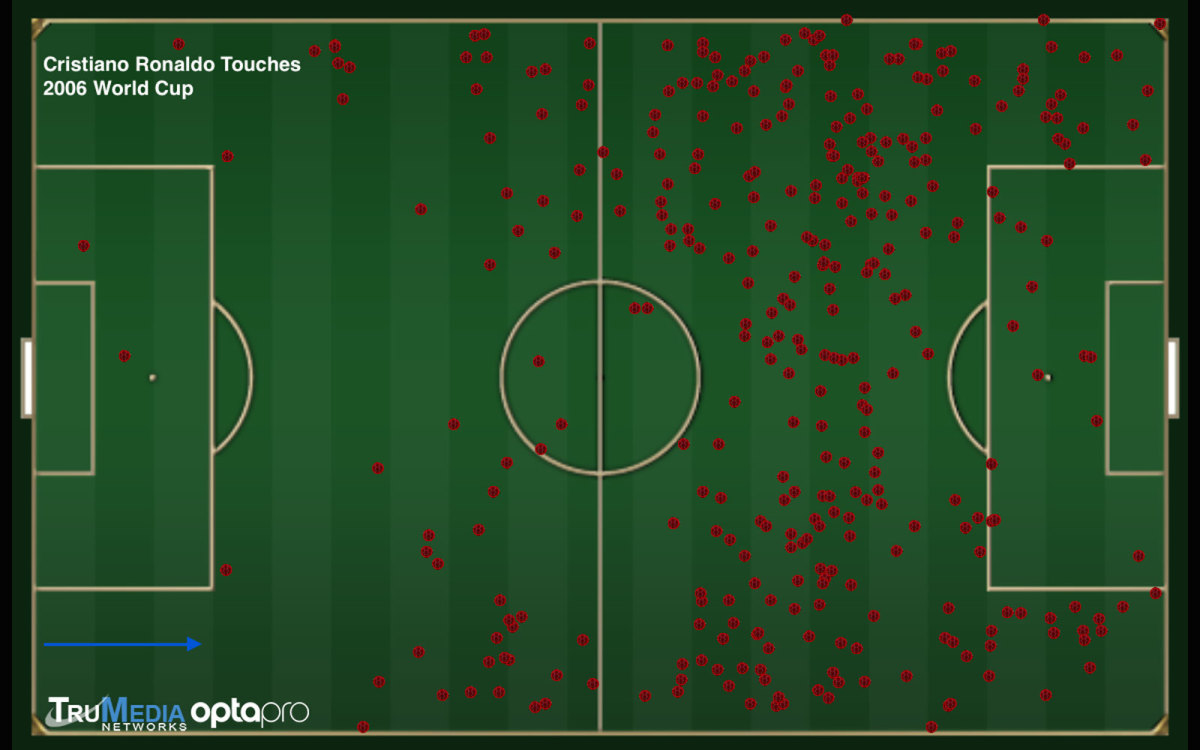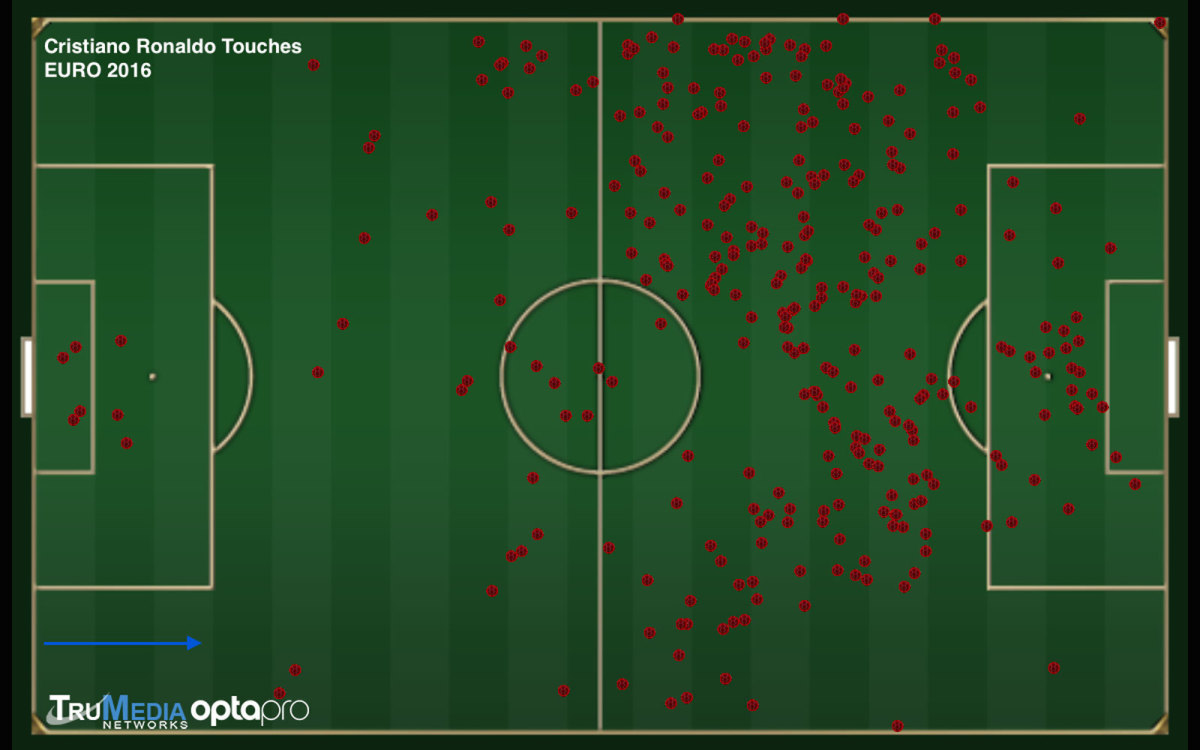Inside the Numbers of Lionel Messi and Cristiano Ronaldo's World Cup Past

The 2018 World Cup will likely be the final global opportunity for Lionel Messi and Cristiano Ronaldo to affect their legacies.
Messi will be 31 on June 24, between Argentina’s second and third group games, and Ronaldo turned 33 in February. At the very least, this will be the final World Cup with both near the peaks of their powers.
Each player is his country’s respective career scoring leader (Messi with 64 goals in 124 games; Ronaldo with 81 goals in 150 games), though neither leads his country in goals at the World Cup, where each has had a range of performances in three previous appearances.
Here's a closer, inside-the-numbers look at how each superstar has played on the World Cup stage:
Lionel Messi
Messi’s top-level World Cup stats (five goals in 15 games) don’t even match the much-maligned Gonzalo Higuain (five goals in 11 games), let alone those of the countryman to whom Messi is most often compared, Diego Maradona (eight goals in 21 games, and the 1986 title).
At age 18, Messi’s worldwide introduction came during the 2006 World Cup, when he subbed in for the final 15 minutes to tally a goal in Argentina’s 6-0 rout of Serbia & Montenegro. He finished the tournament with three appearances (one start) for a total of 121 minutes, one goal, two shots, one assist and five chances created. A solid if unspectacular global debut.
Four years later, Messi had won an Olympic gold medal, his second Champions League title and his first Ballon d’Or trophy. Great things were expected of him in South Africa.
Argentina rolled through the 2010 group stage and round of 16 before getting crushed by Germany in the quarterfinals. Messi was held goalless at the tournament, raising the inevitable, though perhaps unfair question about whether he could translate his club form to the international game.
The underlying numbers suggested that he performed quite well at his second World Cup. His 29 shots were fourth-most at the tournament, and his 5.8 shots per game were second behind Asamoah Gyan’s 6.8. Perhaps Messi’s shot selection could have been better, as only one of his shots came from within 10 yards of goal, but he still put 12 shots on target. Plus, teams were packing the box against Argentina, as shown by Messi’s eight blocked shots and his shot chart that arced around the heart of the penalty area.

Messi tallied a single assist and was sixth in the tournament with 15 chances created. He went one-on-one with defenders 45 times, 10 more than anyone else in South Africa, and he was successful in 69 percent of those take-ons, behind only Alexis Sanchez among attackers (minimum 15 one-on-ones). He also completed 10 passes in the penalty area, seventh-most in the tournament, and second-most by any player who went out before the semifinals.
Messi was undoubtedly active and influential, although the finishing pixie apparently abandoned him and his teammates.
Meet the Ultimate World Cup 23: The Best Talent in Russia
Four years later, Messi had three more Ballon d’Or trophies, another Champions League title, and even higher expectations entering a World Cup on South American soil, where Argentina was the second betting favorite behind host Brazil.
This time, denying his brilliance was impossible. Messi won the Golden Ball as the tournament’s best player, after Argentina finished runner-up to Germany on Mario Gotze’s extra-time winner.
Messi’s finishing was sublime, as he tied for third with four goals (on 1.54 expected goals), including three from outside the penalty area. The importance of his goals was as impressive as the volume. Consider his essential accomplishments in Brazil:
- Scored once and caused an own goal in a 2-1 win over Bosnia-Herzegovina
- Stoppage-time strike to give Argentina a 1-0 win over Iran
- Two goals in the first half of a 3-2 win over Nigeria
- Assist on Angel Di Maria’s winner in the 118th minute of the round of 16 versus Switzerland
- Converted his shootout attempt in the semifinals versus Netherlands
- Four shots and two chances created in the final
Messi finished with 23 shots, third-most in Brazil, and a tournament-best 23 chances created. He had 76 one-on-ones, 23 more than any other player, and he was successful at a 61 percent clip.

Since the 2014 World Cup, all Messi has done is carry Argentina to another World Cup berth and two Copa America finals, both lost on penalty kicks to Chile. He piled up six goals and seven assists in 11 Copa games, although he is perhaps most-remembered for firing his shootout attempt high in the 2016 final.
He may be even more needed in Russia. After taking 22 percent of Argentina’s shots and creating 30 percent of his team’s chances while on the field in Brazil, he topped 30 percent of shots and 35 percent of chances created in both Copa America Centenario and during CONMEBOL qualifying.
La Albiceleste lost once in the 10 qualifiers he played this cycle, outscoring opponents 13-6, with Messi scoring or assisting on nine of the 13 goals. They won once in the eight games he missed, getting outscored 10-6. Messi capped qualifying with a hat trick against Ecuador in the final match, securing Argentina’s 12th consecutive World Cup berth.
Cristiano Ronaldo
While Messi and Argentina have improved their results over the past three World Cups, Ronaldo and Portugal have trended the opposite direction.
The end of Portugal’s golden generation combined with a 21-year-old Ronaldo to finish a surprising fourth in 2006, falling 1-0 to France–and Ronaldo's now ex-manager, Zinedine Zidane–in the semifinals. Four years later, the same score saw Portugal ousted by eventual champion Spain in the round of 16. In 2014, Ronaldo and company went out in the group stage, never fully recovering from a 4-0 thrashing by Germany in the opener.
At the World Cup, Ronaldo hasn’t yet excelled as Messi has, with the Portuguese star’s scoring a microcosm of his success. Ronaldo scored once in each tournament, though none of the goals was particularly meaningful or highlight-worthy. He converted a penalty versus Iran in 2006, a sheepish finish in 2010’s 7-0 rout of North Korea, and a relatively meaningless winner in the last 2014 group game against Ghana.
More interesting than what Ronaldo has done is his evolving role with Portugal, shifting his toward goal both vertically and horizontally.
At the 2006 World Cup, Ronaldo was far more active in the midfield, both offensively and defensively. He went one-on-one 37 times and had 36 recoveries of the ball in 484 minutes. Four years later, he had 21 one-on-ones and 11 recoveries in 360 minutes. In 2014, those numbers dipped to 12 one-on-ones and four recoveries in 270 minutes.
This is because Ronaldo has evolved into more of a true forward than a winger. He sent in 21 crosses in 2006, and a total of 14 in 2010 and 2014. In Brazil, 35 percent of his touches were in the center third of the field (as opposed to the left or right thirds), up from 28 percent in 2010 and 18 percent in 2006.
Year | Minutes | One-on-Ones | Recoveries | Crosses | % of Touches in Center Third |
|---|---|---|---|---|---|
2006 | 484 | 37 | 36 | 21 | 18% |
2010 | 360 | 21 | 11 | 9 | 28% |
2014 | 270 | 12 | 4 | 5 | 35% |
Most of these trends continued at Euro 2016, where Portugal won its first major championship. Ronaldo led Portugal with three goals and two assists, while going one-on-one only 11 times and sending in a single cross in 625 minutes. A whopping 41 percent of his touches were in the center third of the field. Compare his touches at the 2006 World Cup to those at Euro 2016, particularly in the final third:


Both Messi and Ronaldo have commanded the ball at major tournaments, though in different ways. At each World Cup since 2006, Messi has had at least 9.8 percent of his team’s touches while on the field, ranking in the top four for Argentina. He’s led Argentina with over 30 percent of shots taken in three straight competitions, peaking at 33 percent for Copa America Centenario.
Ronaldo has never had more than 9.8 percent of Portugal’s touches while on the field at a major tournament, but he has dominated Portugal’s shots. Even at the 2006 World Cup, Ronaldo took a team-high 27 percent of shots when he was on the field, and that rate ballooned to a tournament-high 42 percent in 2014, before settling to 39 percent at Euro 2016 and 37 percent this qualifying cycle.
Messi and his statistics have shined before at World Cups but never produced a major international title. Ronaldo’s numbers haven’t been great on the global stage, but Portugal is the reigning European champion.
In what may be the final World Cup for each, expect them to dominate again, in both stats and storylines.
Paul Carr is Director of Content Development for TruMedia Networks, which collaborates with OptaPro on ProVision, a web-based soccer tool used by clubs and media for analytics, scouting and recruitment.
